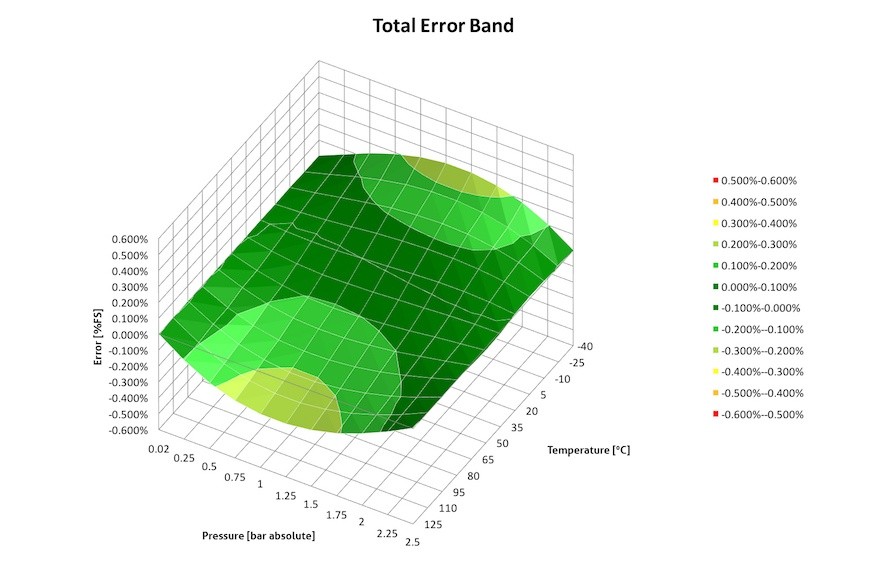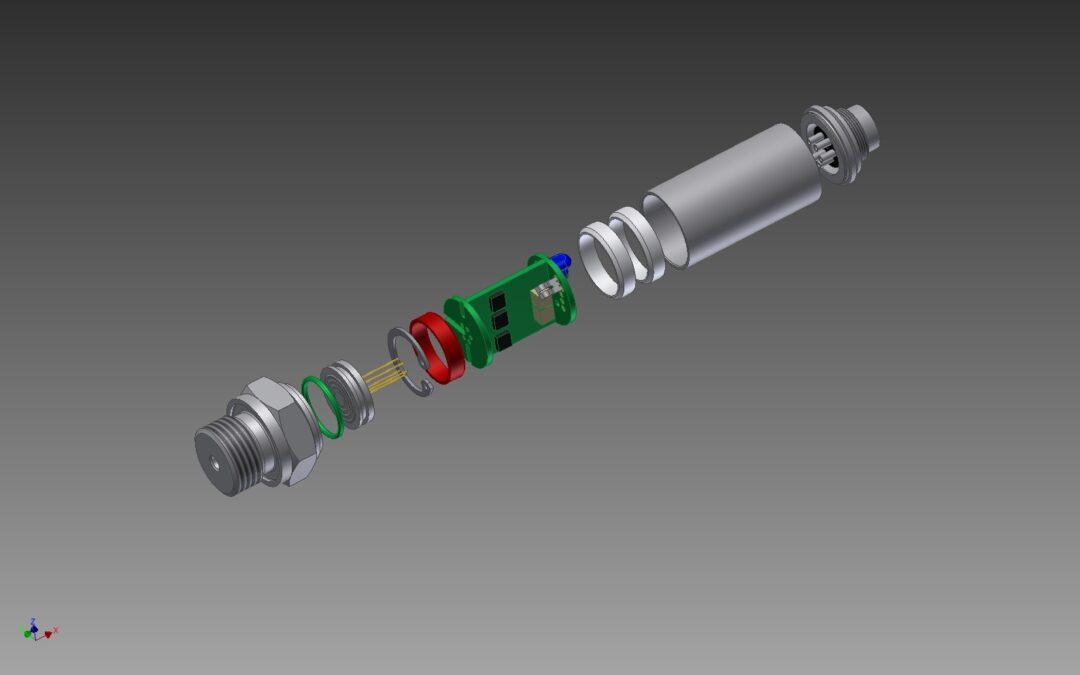Whether on engine and transmission test beds, the monitoring of hydraulic systems, leak testing or the calibration of medical devices, users must be able to rely upon the precision of their pressure measurement technology.
Reliable pressure measurement technology demands a robust core technology. Although there are different types of pressure transmitters, measuring instruments using piezoresistive semiconductor technology are often the first choice for test & measurement applications. The simple reason for this is that, in contrast to thick-film sensors (ceramic base material) or thin-film sensors (metal base material), piezoresistive pressure sensors based on semiconductor are characterized by an unrivalled sensitivity, which makes pressures even in the mbar range measurable. Complemented by an outstanding precision of up to 0.05 percent of span, piezoresistive pressure sensors provide exactly those properties essential to calibration tasks in the medical field or the demanding requirements of engine development.
Long-term stability even under overload
Especially in the testing of new technologies, users cannot know in advance which pressures their sensors will encounter. Particularly when measuring pressures in fluid pumps or hydraulic systems, pressure peaks can occur that far exceed the targeted measurement range. If users in this case have not acquired their pressure transmitters on demand, a defective measuring device can throw development cycles way off course – and do so with far-reaching consequences.
Besides high precision, the lifetime optimization of measuring devices is a further factor that demands a robust core technology for test & measurement purposes. This requires a thorough examination of the base materials and a conscientious qualification of the products on the part of the manufacturer. Temperature susceptibility, for example, is a weakness of piezoresistive pressure transducers, which can be compensated for by various measures to the extent that it no longer plays a significant role in practice (read more on this topic here).

Total error – Highest precision over the entire temperature range.
Two further important measures on the manufacturer’s side, implemented as standard by STS, also contribute to optimizing the service life of pressure transmitters. In piezoresistive pressure sensors, there still exists quite a lot of movement, especially during their first year of use. Thermal treatment, however, can be employed in anticipation of this trait, now stabilizing the measuring device accordingly. Those errors common in the first “year of life” of a sensor have thus been eliminated. Furthermore, it is now standard for STS pressure transmitters to withstand at least three times their measurement range in overload pressure, without even suffering any damage. This overpressure, incidentally, can be individually designed in according to customer requirements. Read more about the lifetime optimization of pressure transmitters here.
Test & measurement: Precision is individual
When is a pressure transmitter deemed precise? Quite clearly, when it meets the requirements of the respective application as exactly as possible. This means that the more individually a measuring device can be adapted to an application, the more accurate the measured results it can deliver.
The serving of application-specific requirements is particularly important in test & measurement applications. Precision, of course, also plays a role here, since a pressure sensor optimized for a measurement range of 1 to 5 bar is more accurate at an error of 0.05 % of span than a device with a measuring range of 1 to 50 bar. Often, however, integration of the measuring device often plays an important role also. In the development of new engines, for example, so many sensors are mounted on the test bed that connection options play just as important a role as the dimensions of the measuring device itself.
As a rule, STS always works to a modular design principle when developing its measuring instruments. This means that all products can be supplied with any process connection as required. A wide range of materials is also available to rule out any eventual media incompatibilities. Pressure measurement ranges can likewise be individually optimized to the respective requirement. And all of this individualization of our measurement devices can be realized within the shortest of timeframes. This is an important criterion for test & measurement purposes, since unexpected measurement requirements can arise, especially when testing out new technologies. To avoid long downtimes and unnecessary financial losses, the delivery of a solution that meets all of the specifications thus becomes an essential factor in itself.
